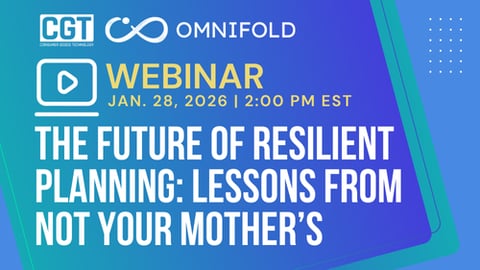How Data Can Help You Respond to Unplanned Spikes in Demand
Between rising inflation and ongoing food and labor shortages, inventory planning has been a complicated task for most grocers and consumer packaged goods (CPG) companies. Now with the rise in popularity of apps like TikTok and YouTube, these same organizations must tackle another hurdle in their inventory planning journey: product virality.
In 2021, for instance, we saw feta cheese become a hot ticket item overnight after a TikTok recipe for baked feta pasta went viral. Today, the hashtag #TikTokMadeMeBuyIt is widely used when shoppers are influenced by a product they saw on the social platform.
This rise in product virality has made inventory planning even more complex for grocery and CPG companies. And in an industry where margins are tight, picking the right path forward is critical to success.
While it may be tempting to respond by increasing planned orders or executing special orders to meet these unexpected spikes in demand, given lead times for production and shipping, it’s more than likely that demand will normalize, and the trend cycle will pass before inventory can be replenished. On the other hand, companies that do nothing risk missing out on sales during these moments of peak virality.
Both options come with risks, so how can supply chain leaders ensure they are making the best decision for their business? That’s where demand-sensing comes into play.
Using Data to Stay Ahead of Trends
Demand-sensing enables supply chain leaders to analyze virtually any type of real-time data, like data scraped from social sites such as TikTok, for product mentions or relevant trends. Companies can then evaluate the influence of those mentions and leverage the insights to predict spikes in demand one to two weeks in advance.
So, if a CPG company notices an uptick in social activity for a certain beauty product for instance, they can get additional inventory in place, without jeopardizing future sales, to capitalize on the trend before it hits peak virality.
Companies can also leverage demand-sensing to analyze product sales activity — from distribution activity to SKU point-of-sale (POS) data –– to gain insights on demand and channel inventory levels.
[Related: Infographic: A New Day for Demand Sensing]
For example, if data shows that a certain type of cereal is being sold at a faster than planned rate in a specific store, CPG manufacturers can adjust replenishment in the near term and production levels further out in time. This ensures supply can meet demand for near term spikes and inventory can be replenished to planned levels within planning lead times to avoid stockouts. Demand sensing solutions can be particularly effective in balancing sales and inventory in more complex omni-channel fulfillment environments.
Capitalizing on the Benefits of Demand-Sensing
Demand-sensing might be a key to successfully navigating unplanned spikes in demand, but getting the most out of this capability requires collaboration and visibility. Grocers need to share data with manufacturers to help shape production, and manufacturers need to share data with grocers to shape inventory, staffing, and marketing decisions.
This level of data-sharing is especially critical given the recent rise of omnichannel fulfillment. Today consumers can buy their groceries online and decide whether they want to pick-up in store or have them shipped or delivered. So much choice might be great for the consumer, but it drives massive amounts of activity and point of sale data that must be shared between grocers and manufacturers in real-time to get the most out of demand-sensing.
Capitalizing on the value demand-sensing can provide also requires internal collaboration and visibility. For instance, if a CPG company knows that a certain cereal brand has gone viral on TikTok, sales and marketing teams can leverage data from demand-sensing to adjust quotas and projects, and to drive further promotion of that or other cereal brands.
A Tool for the Future
There’s no question that supply chain volatility is here to stay —and as we’ve learned over the past two years, continued shifts in consumer shopping preferences and behaviors should be expected.
While forecasting is often an imperfect endeavor, with new tools and technologies, like demand-sensing capabilities, supply chain leaders at grocery and CPG companies can get ahead of rapid trend cycles, maintain an agile inventory plan, and seize the moment when viral or unplanned spikes in demand occur.
Tom McDonough, Senior Director of Supply Chain Solutions at Anaplan




